Had a blast yesterday so good to get back out on the water even managed to pull in a few decent fish safe to say fish for dinner tonight!!

Source: Jack Miller on Facebook
Had a blast yesterday so good to get back out on the water even managed to pull in a few decent fish safe to say fish for dinner tonight!!

Source: Jack Miller on Facebook
The Covert Ultra Jeans from Scorpion combine comfort, style, and protection in one pair of pants. With Cordura/DuPont Kevlar single-layered weave, the heavyweight 12.5 oz denim has seven times the abrasion resistance of typical denim for a blend of comfort and protection.
Read all of Rider’s apparel reviews here.
The Covert Ultra Jeans feature a water-resistant coating to keep your legs dry, and the breathable single-layer construction drastically reduces bulk for added comfort.
Hip armor pockets and adjustable armor pockets for the knees allow riders to insert extra protection if desired.
The Covert Ultra Jeans are available in a traditional 5-pocket design with tapered fit and integrated 3M reflective swatch at the lower hem for $199.95.
The post New Gear: Scorpion Covert Ultra Jeans first appeared on Rider Magazine.
Source: RiderMagazine.com

New from Yamaha Bicycles is the CrossCore RC pedal-assist bicycle, a Class 3 urban all-rounder. The CrossCore is designed for folks who want a fun and easy pedal-assist bicycle to ride to work, around town, running errands, or basically anywhere anyone would need a general-purpose electric bike.
Editor’s note: We reviewed Yamaha’s ebikes during the 2022 Yamaha CrossCore RC and Wabash RT Review article and video. We’ve also reported on these ebikes in the 2022 Yamaha Wabash RT Electric Bicycle First Look and 2022 Yamaha CrossCore RC Electric Bicycle First Look articles.
Although Yamaha Bicycles is new in the electrical bicycle segment, joining the fray in ‘18 in the United States, Yamaha’s been manufacturing pedal assist bicycles in Japan since 1993.
At the heart of its 52-pound CrossCore is a compact electric motor producing up to 59 lb.-ft. of torque and providing support up to 28 mph, powered by a 500-watt battery integrated into the main aluminum frame. The battery is charged by a household-style power adapter; with a full charge, the range is around 100 miles on the lowest power setting.
A clean-looking LCD-style meter keeps tabs on vehicle measurables like speed, distance, and so on, and is where the rider controls the level of pedal assist. After maximum power, everyone’s favorite setting, there’s also standard power, eco, and an eco-plus mode. An automatic setting cycles through the power modes to ensure proper propulsion help regardless of incline or other terrain-related variables. For 2022, Yamaha has added an extra cog inside the rear cassette, taking it from eight to nine speeds. Additionally, the big sprockets have been made bigger, which is better for climbing steep grades.
The CrossCore has 27.5-inch spoked wheels and rolls on wide, meaty tires, and could absolutely be ridden off-pavement. There is no suspension aside from this hydraulic fork, which can be locked into a fixed setting if the rider doesn’t desire suspension travel. Capable hydraulic disc brakes by Shimano keep speed in check, and a standard finger-operated bell lets passersby know you are coming. Rounding out the $3,099 package is a nifty LED headlight.
The torque assist from the Yamaha PW-generation motor makes quick work of any hill. The whole idea, after all, is that the rider doesn’t have to be in top physical condition to operate this bike as if they are, so this bike is great for someone who likes their carbs but still wants to tour the countryside or cityscape. And with fuel prices still high, a pedal-assist bicycle makes a lot of sense for those living in urban areas. And at this MSRP, relatively low for a pedal-assist bike, it’s easy to imagine having two CrossCore RCs in the garage and having friends over for fun, low-effort bike rides.



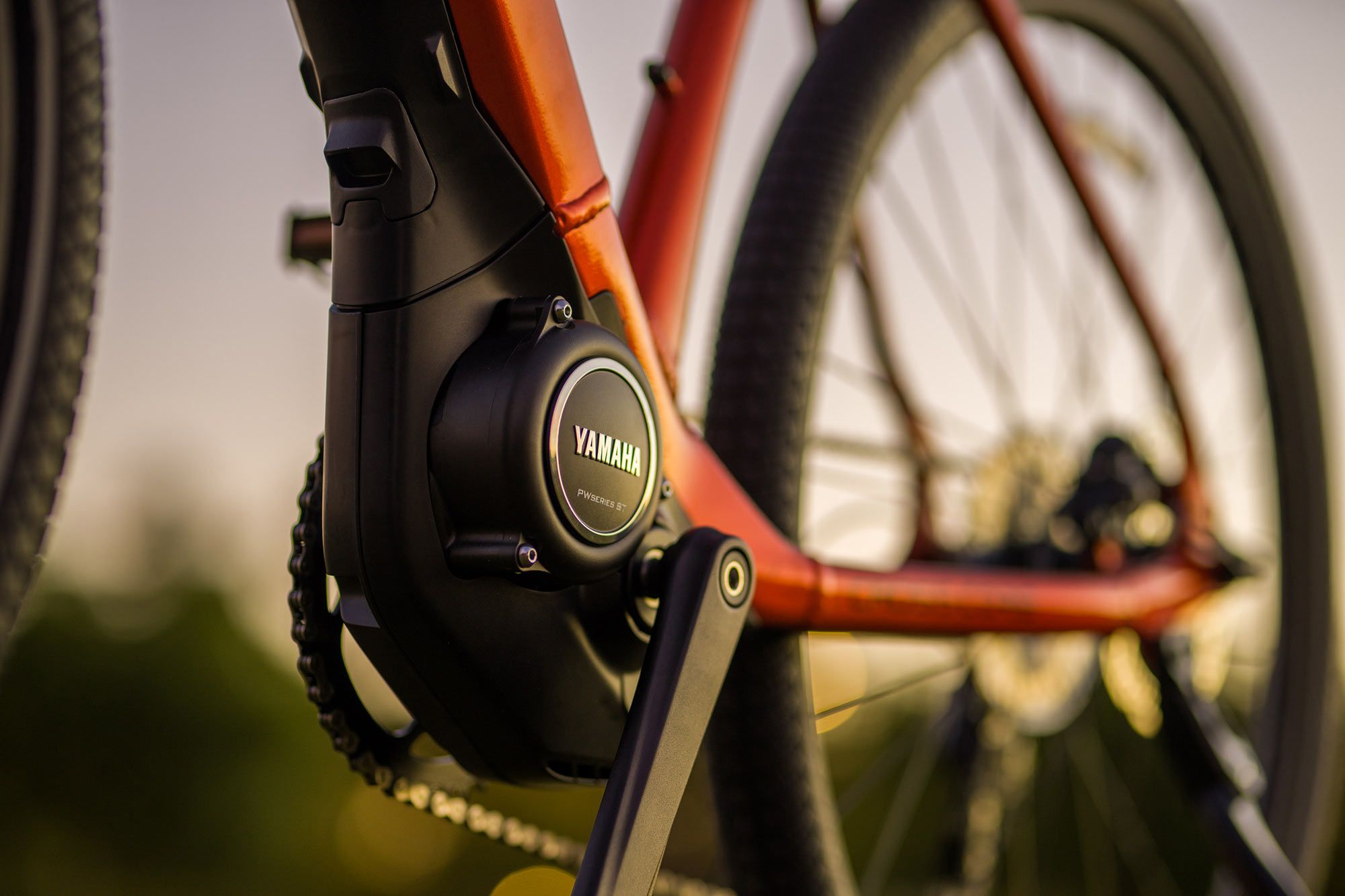
Source: MotorCyclistOnline.com

Why on earth did I recently pick up a 2006 “iron barrel” Royal Enfield Bullet 500? In a word, nostalgia.
The last bike I had to kickstart was a used 1970s Honda Trail 70 that I got on my 10th birthday. It was loud and burned oil, and I terrorized the neighborhood’s backroads at a blistering 30 mph. That bike was life, and it made me feel like Evel Knievel. Some of my friends’ parents thought I was a bad seed as a result, but I was just having fun and caught the adrenaline bug early (and some of the suit-wearing dads were probably jealous).
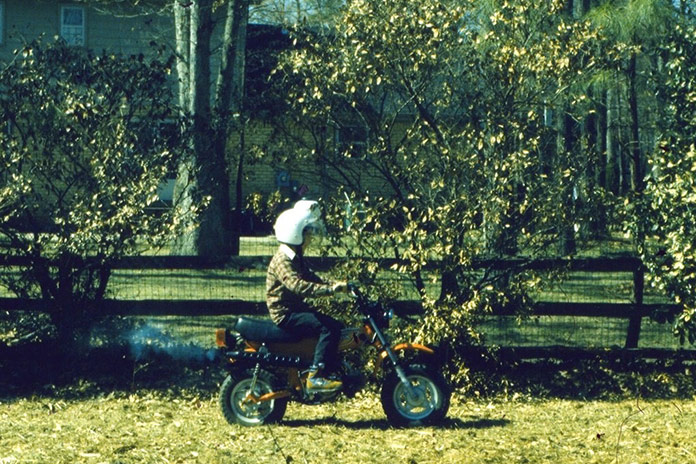
My first streetbike was a used 1989 Honda NT650 Hawk, which was fast in its day and a real performer, and I’ve craved that rush ever since. Fast forward to today, and I’m riding a supercharged Kawasaki Z H2 that doesn’t disappoint.
I guess I’m about to age myself, but it’s been 33 years since I last kickstarted a bike (at 15) and here I am kickstarting a streetbike in 2022 – a new-to-me 2006 Royal Enfield Bullet 500. That sounds fairly new, but these bikes are anomalies as they’re basically 1955 designs. India had strict tariffs for decades that kept foreign competition out, so there wasn’t an urgency to update what became a timeless design. It’s like a Volkswagen Beetle on two wheels.

The first Royal Enfield motorcycle was built in 1901 by the Enfield Cycle Company of Redditch, England. In 1931, Royal Enfield introduced the Bullet, a single-cylinder motorcycle available in 350cc or 500cc displacements that was built in the UK until 1966. Like many other British manufacturers at the time, Royal Enfield suffered a slow, ignominious decline and finally went belly up in 1970.
Related: The Royal Enfield Story
In 1955, India’s Madras Motors was granted a license to build Bullets, and Royal Enfield India was established as an independent company. It thrived, outlasting its English cousin and growing into one of the world’s largest motorcycle manufacturers, headquartered on India’s southeastern coast in Chennai. Bullets were produced essentially unchanged for more than five decades until they were upgraded in 2008 to an all-aluminum unit construction engine (UCE) with fuel injection. Bullets continued to be produced until 2020. In 2022, the iconic Bullet styling was reborn in the Classic 350.
Related: 2022 Royal Enfield Classic 350 Review
The pre-UCE Bullet’s reputation is interesting; it’s a quirky, no-frills, underpowered bike with quality control issues and bizarre maintenance needs, but it’s also one of the most iconic models in history. In fact, it holds the claim as the longest-running motorcycle model in continuous production: 90 years, from 1931 to 2020. It beats the venerable Harley Sportster, which was produced for 66 years (1957-2022).
Related: Evo Sportster | End of an Era
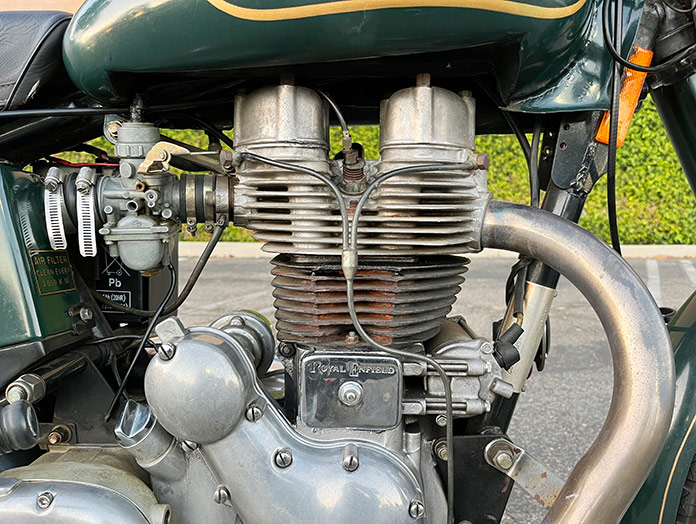
Technicalities aside, no other bike from the 21st century provides such an “old world” experience as an Royal Enfield Bullet with cast iron cylinder barrels in an aluminum head. Even Harley changed to all aluminum engines in the mid-1980s to keep up with foreign competitors. I just had to know why a traditional Bullet is such an icon. Or to think about it another way: What was it like riding in my grandfather’s day? (Hint: horrible.)
This particular bike is a solid runner, but it has multiple issues and took many nights in the garage to get it where it is today. There’s some piston slap (likely an issue with bearings), the timing gears are a bit worn, and the transmission is so sloppy that every gear change is a potential false neutral. Finding actual neutral is challenging enough that it could qualify as an Olympic event. Since operating this bike is more art than science, I wear old sneakers so I can really feel the shifter.

Kickstarting a bike that’s loud, obnoxious, and problematic takes me back to the Honda that my dad rolled into the kitchen when I thought a pair of shoes and jeans were my only 10th birthday gifts.
When I’m on my Kawi Z H2, I feel kinda cool. It looks futuristic, sounds amazing, and is almost always the fastest bike on the road. Only a handful of other naked bikes can compete – Ducati V4 Streetfighter, Aprilia Tuono V4, Triumph Speed Triple 1200 RS, you get the idea. It’s never about image and always about having fun, though on rare occasions I do pretend to be Batman (minus the cape). What can I say? When stopped at lights, people sometimes stare and even ask questions. It’s just one of those bikes.
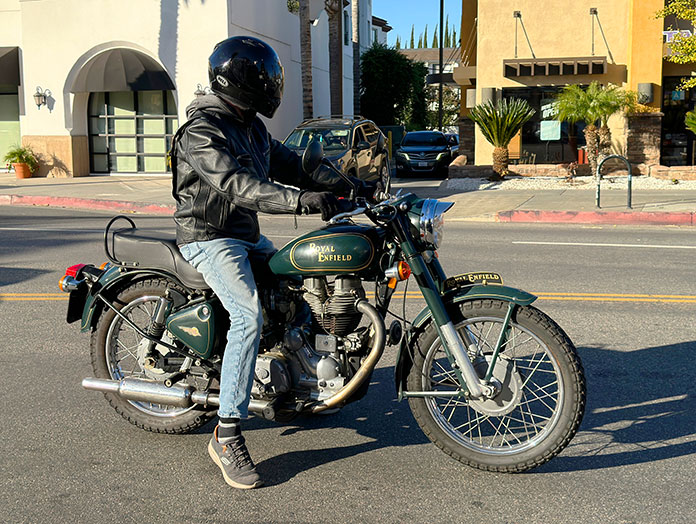
My Royal Enfield Bullet, however, elicits different kinds of stare. Some people think I’m broke and desperately trying to get somewhere on an old, loud, crappy bike. Others give me a nod of admiration. Some recognize it for what it is, while others simply appreciate vintage bikes – or a motorcycle built in 2006 that looks like it was built in 1955.
Related: 2010 Royal Enfield Bullet C5 Classic Review
Let’s back up for a second. Like I said, it’s not about image, but this bike just screams for attention. The exhaust is already loud, and there are rattles and knocks that would scare an antique chainsaw. When I can tune out the clatter and hear the distinctive thumping of the 500cc Single, however, it starts to make sense. There’s a legit icon underneath the proverbial rust (although there’s some real rust too). The noise tends to quiet down in 4th and 5th gears, and having a sense of what bikes were like in the mid-20th century is kind of cool. When parked, I’m amazed that so much ruckus can come from such a small bike. It’s like a rabid chihuahua.

Los Angeles is an interesting place to ride. Some of the best motorcycling roads are located within reach – the Pacific Coast Highway, all the legendary Malibu roads (Mulholland, Latigo, Piuma, Stunt, Decker, etc.), and the Angeles Crest Highway, to name drop just a few. But cruising through the city is a different experience entirely. Traffic is notoriously bad, as are the drivers, but a bike like the Bullet 500 is designed for this. Have you ever seen the chaotic car, motorcycle, bicycle, pedestrian, and animal traffic in India? It’s pure mayhem.
That said, I’ve never ridden a streetbike like I do the Bullet. I’m more focused on engine noise and when to shift and am hesitant to exceed 50 mph as the engine complains in no uncertain terms. I already feel like a hospice caregiver forcing my patient to jog, so pushing it to a sprint is probably ill-advised.
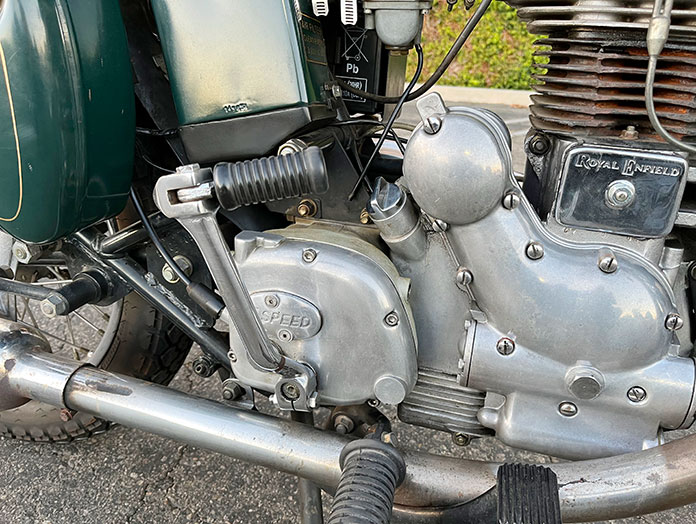
Let’s start on a typical cold November morning. The kickstand is missing, so it’s a centerstand-only affair, although that’s ideal for kickstarters. The bike originally came with a points ignition system, but somewhere along the line it was upgraded to an electronic ignition. That’s a more reliable system but negates a traditional way to kickstart the bike. You want the piston at top dead center, and with points, the ammeter (next to the speedometer) can signal this position. It doesn’t work with an electronic ignition, so I just go by feel and when it seems close enough. I’ve reached a point where it starts within three kicks when cold. That sounds positively archaic, but prior to getting my Bullet truly road worthy, it could take 10 or even 15 minutes to start. I don’t care what kind of shape you’re in, that’s exhausting.
After a few minutes of questionable rattles and knocks, it’s warmed up and ready to roll. I maybe use 50% of the throttle as I again don’t want to push it, and that makes an already slow bike even slower. We’re talking about 23 hp (when new). There are drum brakes front and rear, so I plan stops accordingly as it’s like slowing a freight train.
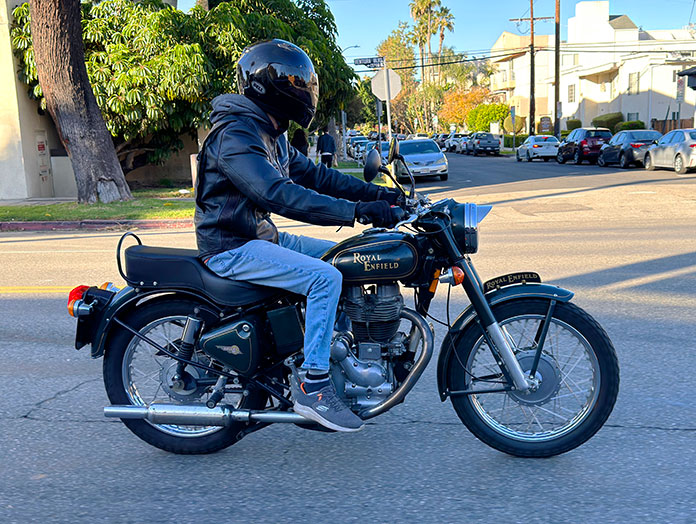
Lane splitting is easy as the bike is loud and narrow, but overtaking cars just isn’t a thing, and those ubiquitous pay-as-you-go electric Lime scooters can easily pass me. It’ll comfortably cruise at 50 mph and blend in as a bona fide motorcycle, though. Honestly, I’d be miserable if this was my only bike (see supercharged Kawasaki Z H2 above), but as a second or third bike, it’s entertaining, and I’m no longer concerned it’ll leave me stranded. It even handled a recent 25-mile ride like a champion asthmatic senior Great Dane with hip dysplasia.
Everything works during the day (relatively), but things change after dark. The headlight turns on (you can also turn it off), but it draws too much power and tries to stall the bike. It’s an aftermarket unit and the battery charges fine, so I’m not sure if it’s an alternator thing or just the wrong third-party light. The speedometer doesn’t light up at all, although that’s likely just a blown bulb. Thankfully the motorcycle gods have left the neutral light intact because if that didn’t provide its faint green glow, the already difficult transmission would be nigh impossible to deal with. It’s important to ride this bike often to keep it healthy, as even parking it for a week can cause issues, including oil settling (called wet sumping). Therefore, I’m forced to ride at night on occasion.

My current solution is to (allegedly) use a very powerful handlebar light for mountain bikes. It’s brighter with a wider spread than the stock headlight and designed for rough terrain, so the heavy engine vibrations aren’t problematic. I’m not sure about the exact legalities, which is why I allegedly do it. And it allegedly works very well. The beam even lights the speedometer on its way to the street. The permanent solution is either a stock headlight or new alternator, and I’m hoping the former is the answer.
Back when my bike was new, Rider tested a 2006 Royal Enfield Bullet 500 ES Electra X, which is an upgraded, premium edition. Things were a little problematic even then, so you can imagine what the years, multiple owners, and almost 20,000 miles can do to a very old Indian design. It amazes me that this Bullet was sold new in 2006, but I also appreciate it. It’s not for everyone – and I’d only recommend it as a second bike – but the overall experience is unlike anything built after the early 1970s. Build quality is questionable, regardless of mileage or abuse, and as mentioned earlier, it’s quirky by even the most charitable standards of today. I also have a 2022 Royal Enfield Continental GT 650, which is basically a 1960s cafe racer without the headaches, and it might as well be from a different manufacturer. Royal Enfield has come a very long way, and the Continental can (kind of) rival a modern Triumph.
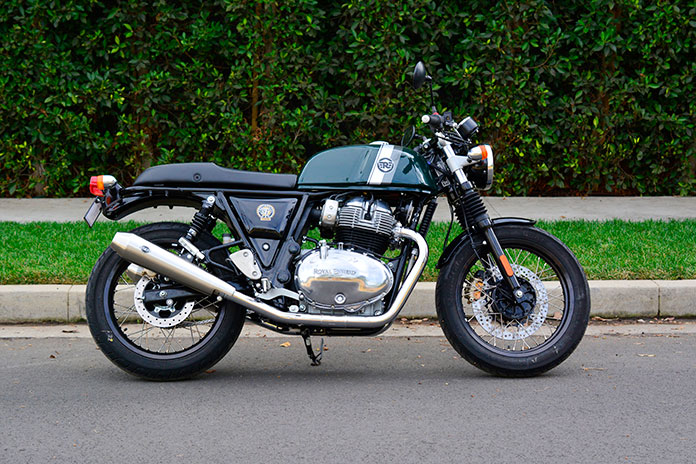
So, is it worth it? Yeah, but only for the right person. This is all about riding a historic model, understanding its shortcomings, and appreciating how far motorcycles have come. It’s a snapshot of the 1950s, not the 21st century, which is an important distinction. Don’t let “2006” fool you. If I didn’t have my other bikes, I’d likely hate the Bullet, but as a niche ride that doesn’t have responsibilities (as in, actually getting me somewhere fast), this iconic piece of British-Indian engineering will always have a home in my garage.
The post Living with an ‘Iron Barrel’ Royal Enfield Bullet 500 first appeared on Rider Magazine.
Source: RiderMagazine.com

Tension. It’s just one word that perfectly describes what MotoGP™ is all about, and throughout a weekend, tensions are high on several occasions. Below are some of the best shots that portray tension at some of the different Grands Prix this season.
Source: MotoGP.com – Read Full Article Here
KTM has announced that joining the recently unveiled 2023 KTM 890 Adventure R is the new KTM 890 Adventure, a bike the company called “the ultimate master of all conditions and distances.”
Related: 2023 KTM 890 Adventure R | First Look Review
The 2023 KTM 890 Adventure features a liquid-cooled 889cc LC8 parallel-Twin, a 6-speed gearbox, the PASC slip/assist clutch, Bosch EMS with throttle-by-wire, and Dell’Orto throttle bodies with an integrated knock sensor for handling varying fuel quality while off the beaten path.
For 2023, one of the most significant changes has been made to the fairing between the front of the bike and the fuel tank.
A connected fairing section offers improved protection from the elements, and it is now further reinforced to offer more security and more load-bearing capability for larger GPS devices. The KTM 890 Adventure also has wider panels on the tank and side panels.
For suspension, the reworked WP APEX 43mm fork now comes with adjustment for rebound and compression, accessible from the top caps. The APEX shock, engineered and slotted into the bike to minimize height, has new settings orientated for the demands of adventure riding.
A new ABS unit is informed by the six-axis IMU to enable full braking power in a range of scenarios. The improved ABS is synced with the ride modes, allowing Offroad ABS (maximizing braking control through disengagement on the rear wheel and lowered intervention on the front) to be activated automatically in Offroad or Rally mode.
The KTM 890 Adventure can be clicked into Street, Offroad, Rain, and an optional Rally mode to adjust engine and traction control character, and a Demo setting allows the rider the chance to try the full gamut of optional rider aids for the first 932 miles (1,500 km) before deciding whether to purchase and keep them permanently.
The 2023 KTM 890 Adventure has a new higher windscreen that offers increased protection and is inspired by the product used on the KTM 450 Rally, and the two-part seat has a new soft foam structure and a slimmer front fender for aerodynamics and rain protection.
The overhauled 5-inch TFT display has revised hardware (bonded mineral glass for extra scratch and glare resistance), and KTM says the redesigned software system of menus and infographics makes alterations to the behavior of the KTM 890 Adventure even simpler. The backlight changes intensity as it reacts to the environment, and a new feature for 2023 enables riders to list their ‘top 10’ calls by the last ones made or favorites list. The Turn-by-Turn+ navigation allows the rider to add extra customization to their navigation details on the go from the bike’s TFT menu without having to stop and fish around for their mobile device.
Sportier graphics and more dynamic looks (the plastics are color injected and using in-mold decals where possible for extra resistance, as seen on the KTM offroad bikes) comes with other practical additions such as the new aluminum engine and tank protector. Other additions include a handlebar switch with hazard warning, Pirelli Scorpion STR tires for offroad emphasis, and LED indicators.
The 2023 KTM Adventure has a 5.3-gal fuel tank and has a dry weight of 441 lb.
Related Story: 2021 KTM 890 Adventure R | Long-Term Ride Review
The 2023 KTM 890 Adventure and 890 Adventure R machines join the flagship 2023 KTM 1290 Super Adventure R and 1290 Super Adventure S, both of which were completely redesigned in 2022.
Related: 2022 KTM 1290 Super Adventure R Review
Both bikes return for 2023 and are still powered by the liquid-cooled 1,301cc LC8 V-Twin engine with a 6-speed PANKL gearbox, PASC slip/assist clutch, and Keihin EMS with throttle-by-wire. Both also have a 7-inch TFT display and Rain, Street, Sport and Offroad ride modes as standard, as well as an optional Rally mode with nine levels of adjustable traction control intervention. Offroad ABS mode allows for dirt-specific ABS application on the front wheel while disengaging the rear ABS.
Suspension on the 2023 KTM 1290 Super Adventure R is provided by a fully adjustable, long-travel WP XPLOR fork with separate compression and rebound damping and a fully adjustable WP XPLOR PDS rear shock. On the 2023 KTM 1290 Super Adventure S, WP APEX Semi-Active Technology (SAT) suspension adapts the damping rates in real time according to Sport, Street, Comfort, or the optional Offroad, Auto, and Advanced, and the WP APEX rear shock with 200mm of travel and new hydraulic preload adjustment (20mm) offers 10 steps of adjustment or, as an optional add on, three levels of automatic leveling in Low, Standard, and High.
The KTM LC8 and LC8c ADVENTURE range will begin shipping to authorized KTM dealers from December onward. Pricing hasn’t been announced as of publication.
For more information, visit the KTM website.
The post 2023 KTM 890 Adventure | First Look Review first appeared on Rider Magazine.
Source: RiderMagazine.com
The seeds for my journey on the Trans Euro Trail were planted in 2015, when I toured Europe on my BMW R 100 CS. I had the briefest sample of Albania, an afternoon riding the most dramatic mountainous landscape on a pristine ribbon of tarmac. Smooth riding perfection soon turned into a perilous off-road trail that put my bike and me well out of our comfort zone. As snow fell and my extended sump rebounded off rocks, I made a rare sensible decision and turned back to Montenegro, vowing to return better prepared one day.

This time around I took my 1982 BMW R 80 ST. It’s not a true off-road bike, but modified with a wide handlebar, a 21-inch front wheel, a longer rear shock, and a bash plate, it’s more than capable of taking on tricky terrain. With countless days on Wales’ toughest greenlanes, plus an enduro race under my belt, I was ready to take on Albania properly.
Read all of Rider‘s BMW coverage here
Choosing a route was easy. The Trans Euro Trail is an incredible resource. With nearly 32,000 miles of off-road trails mapped across Europe, it’s a lifetime’s worth of riding. The Albania section covers 500 miles, which could be a day’s riding on tarmac but is a lot longer off-road. Free GPS routes are available at TransEuroTrail.org, and there’s even a TET app for Android phones that allows you to download all the routes.
Related Stories:

Albania is inconveniently located nearly 2,000 road miles away from my home in Wales. No doubt there’s some spectacular riding on the direct route, but I’ve traveled its roads plenty of times before, and there are too many motorway miles that crush spirit and wear out knobby tires. Instead, I took the ferry to Santander, Spain, with further ferries taking me to Sardinia, Sicily, mainland Italy, and finally to Albania. It’s a great alternative route with fewer motorway miles, beautiful landscapes along the way, and overnight ferries costing not much more than a hotel room – and you can sleep while the boat does the work for you.
The route also gave me a chance to sample other sections of the TET and get a feel for what to expect from it.
When the ferry landed in sunny Santander, I headed south to join the TET at the nearest jumping-on point. As soon as my wheels left the tarmac, I hit thick, wet clay, and within 800 yards, I was on the ground and struggling to pick up the heavily loaded bike as my boots slipped in the slick clay. For a moment I just stood there, staring at my once-pristine bike wedged in the mud on its side. Maybe I wasn’t as ready for this as I thought.
Eventually I got the bike upright, and the next 10 miles was an arduous crawl through deeply rutted clay across unremarkable farmland. The Michelin Anakee Wilds, usually a very capable 50/50 tire, failed to get any real grip as the clay filled the tread, and I had to paddle my feet just to stay upright. The bike was caked in clay, filling every gap between wheels and frame and baking itself solid against the hot engine. I was dirty, hot, exhausted, and soaked with sweat.
Is this what the TET is about? I can fall off my bike in muddy fields back in Wales anytime I want.
As I made my way to Barcelona via the Pyrenees, I hopped on and off the TET at convenient points, using paved roads to make up some miles in between. Thankfully the riding improved in both trail quality and scenery, although I was occasionally hindered by deep snow in the higher ground.
I rode a short section of the TET in Sardinia, fast gravelly trails over beautiful hills, and for the first time I could see the wheel tracks of other bikes.
In Sicily, I enjoyed a few easy days of touring and sightseeing before making a beeline for Brindisi on the southeast coast of Italy, where I boarded the overnight ferry to Vlorë in Albania.
On arrival in Albania, I realized my first mistake: I had my passport, motorcycle insurance, Covid pass, and international driving permit but no vehicle registration documents, which turned out to be vital for crossing borders in this part of the world. In the early hours of the morning, I woke my fiancée back home to email a PDF copy. The border guards were not overly impressed, but it was enough to get me through.

To join the TET, I took the most direct route, which seemed like a major road when looking at Google Maps. On arrival, that road turned out to be a stone military road built by the Italians during World War II – and barely maintained since. The frugal suspension travel on the stock ST fork made for a bumpy ride as I tried to pick the best line across the stones. As spectacular as the views were, it was tough going.
If this is just the road to the TET, how hard is the actual TET?!
When I joined the TET to make my way to the most southerly point of the route, I was surprised to find a smooth tarmac road that winded up in the hills past some spectacular monolithic war monuments before turning to dirt as it dropped down to the warm sunny coast. A spectacular ride, not too challenging, and I finished the day with a pannier-cooled beer on the beach watching the sun go down. A trail rider’s dream!
The next day, I began making my way back north and inland, using tarmac roads to skip the section of the TET I’d already done. When I rejoined the dirt trails, they once again wound into the hills, passing tiny villages of makeshift homes, friendly farmers herding livestock, and rivers cutting their way through gorges and flowing under precarious bridges. One thing the TET has done is bring commerce to these faraway places that otherwise see very few tourists. Groups of trail-weary bikers buy drinks and food and camp in the fields – or in my case, take refuge in the basic B&Bs that cost next to nothing to stay in.
It was my third day in Albania, but I’d already been away from home for 15 days. The trails had been spectacular, but I’d heard they were tough, and so far I hadn’t experienced too much of a challenge. That was about to change.
After an early-morning meal of a banana, cheese triangles, peanuts, and some unidentified tinned fish purchased at a small corner shop, I dropped down the mountain into the town of Gjebes where I saw a battered old Kawasaki 200 trail bike. Its owner soon appeared and introduced himself with well-spoken English. His name was Djem.
When I checked the GPS that morning, I noticed the TET offers two options: a straight(ish) 10-mile section or an alternative 40-mile detour into the hills labeled as “wet option.” The shorter section follows the river, so I asked Djem if it could be ridden this time of year.
“Sure, I’m going that way to work this morning. You can follow me, but I’m running late.”
Djem set off at a pace down the mountain trail, ably carving the best line at speed, which I tried to follow while taking liberties with the ST to keep up. So far on this trip, I’d ridden with a “this bike has to get me home” attitude, but that was thrown out the window.
As advertised, we left the road and dropped onto the vast rocky riverbed. Djem weaved a line from bank to bank, bouncing over the stones and occasionally plowing through the river. As exciting as chasing Djem was, after five minutes, I thanked him and said farewell. He left me with one bit of advice: “When you see the second village, make an exit. After that the water is too deep.”
Realizing our last river crossing was rather photogenic, I decided to take the opportunity to take a much-needed rest and shoot a picture. I made the crossing several times until I was happy with the shot and continued on my journey – only to completely misjudge the climb up the riverbank that I’d just done five times over and topple into the river.
My bike was upside down, and my phone mount fell off and went floating down the stream with the phone inside. Petrol was pouring out of both carbs, so I immediately shut off the taps. With the bike at an awkward angle on the riverbank, I couldn’t get it fully upright with the weight of all the luggage. I was forced to drag the bike to a more favorable position, which meant the whole bike was now in the river. After a lot of swearing and my new deadlift personal best, I got it back upright. Thankfully the bike suffered no damage, and I came out with just a nice lump on my shin as a prize. I managed to rescue my phone from farther down the river, but it was fully drowned and lifeless.
After draining the carbs and a few nervous cranks of the starter motor, the ST spluttered back to life, belching a plume of damp, oily fumes as it cleared its left cylinder. With a dead phone and no GPS to follow, there was just the small matter of navigation. I could see where other vehicles had traveled for the most part, but in sections the pathway seemed to disappear into rocks, leaving me aimlessly bumping around the riverbed searching for a passable route.
Every now and then the reappearance of Djem’s wheel tracks reassured me I was on the right track, only to disappear into water, nowhere to be found on the other side. I plunged in and out of the river, one time beaching the sump on a hidden rock and losing all traction. After that, I began walking the river crossings first to assess a safe route, my boots filling with water as the crossings got deeper. I started wondering if, while focusing on my riding, I’d accidentally gone too far. After nearly two hours, I was relieved to see the second village, and I rode back into relative civilization. Finally, a chance for a drink in a modest Albanian refuge and to empty the water out of my boots.
This was my big adventure for the day, but to Djem it was just another commute.
In stark contrast to the slog across the riverbed, the next day involved fast, open, well-graded trails. For the first time, my speed stayed consistently above 30 mph, and I made good progress, leaving only 75 miles of the TET remaining by the time I reached my accommodation. It was a smart-looking hotel from the outside, but inside it was barely decorated and revealed some dubious building standards, such as a 230-volt socket in a wet room within splashing distance from the shower head and a polished public balcony with no railing.
After surviving an overnight stay in the hotel, I was ready to take on the final section, a jaunt into the Albanian Alps arriving at Theth, one of the country’s top tourist draws. The trail started as tarmac but soon degraded into tough, rocky, technical riding on a path not much wider than a small car and a plunge to certain death as the reward for lost concentration.
By midday I felt like I’d been climbing forever, but I’d only covered 12 miles of the road. The ST was already losing a significant amount of power due to the altitude. It wasn’t until late afternoon that I finally reached Theth, but the effort had been worth it. The harsh, desolate landscape gave way to an oasis of color and beauty in the hills. Charming little houses dotted a towering, snow-tipped landscape, with a blue crystal-clear river running through a deeply cut gorge.

Mercifully, the ride back out of the hills was a smooth tarmac road, albeit with 6-foot walls of snow towering on either side, razor sharp hairpins, and a dizzying descent down the mountain. Despite the evening drawing in, the air warmed as I got closer to the sea, the roads opened up, and the ST regained power as it breathed more oxygen. Not only did the 40-year-old BMW complete the Albanian TET, but it had excelled as a riding companion.
When it comes to an adventure bike, less is certainly more. Traction control, ride modes, adjustable windscreens, and TFT displays are all just distractions around what you really need: a solid, dependable machine that’s easy to live with day to day and can be fixed with basic tools on the road. The ST is light for an adventure bike, coming in at just over 440 lb with fluids compared to a whopping 550 lb on the latest R 1250 GS. In fact, with most of Albania’s vehicles being around 30-40 years old, the ST fit right in!
I don’t like describing my bike as a “classic.” The word suggests a machine kept for its history and novelty, but Airhead BMWs aren’t there yet. To me, they still cut it amongst the best, and their work is not yet done. With the Albanian TET under my belt, I’m now looking toward the next adventure on the ST.
The post Tackling the Trans Euro Trail on a BMW Airhead first appeared on Rider Magazine.
Source: RiderMagazine.com

As well as celebrating the title winners from the motorcycle racing classes, the FIM Awards will also highlight the following: the Women in Motorcycle Trophy, the FIM Environmental Trophy, the FIM Family Trophy, the FIM Trophy for The Future, the FIM Road Safety Trophy and FIM Touring World Challenge.
Source: MotoGP.com – Read Full Article Here
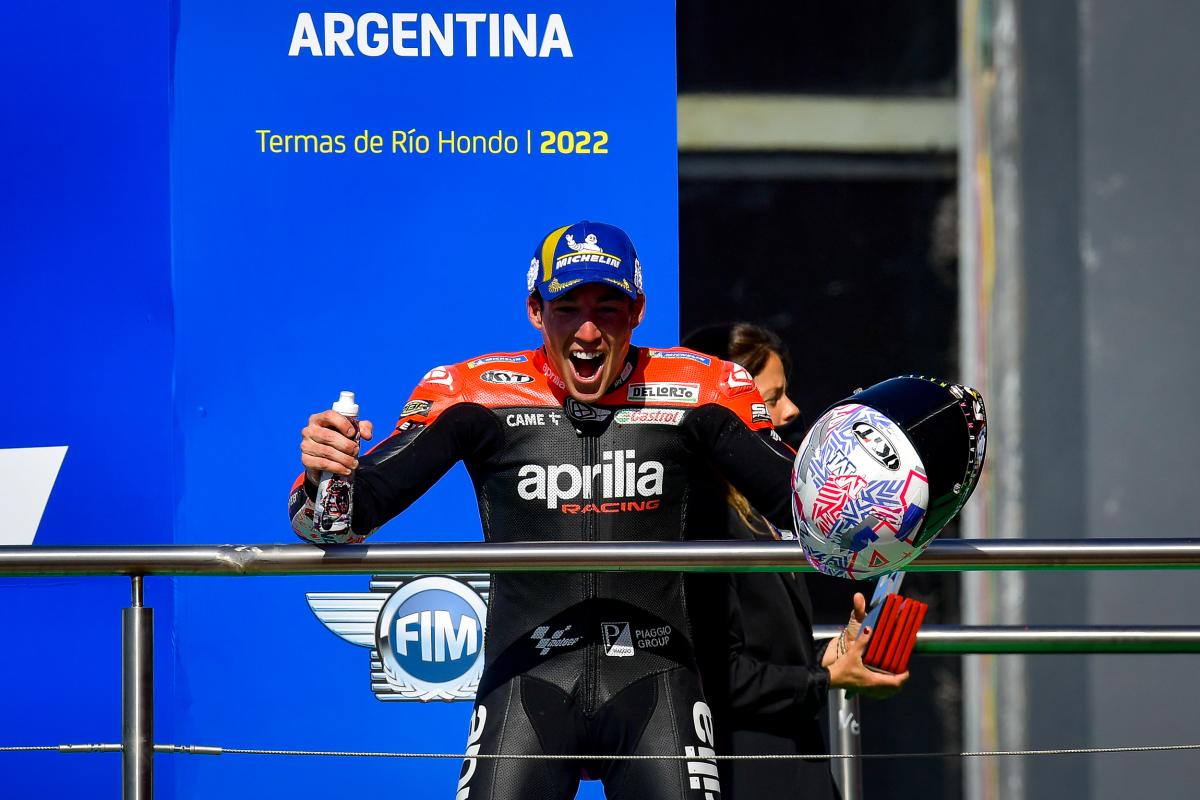
The number 41 launched from P1 but lost the holeshot to Jorge Martin (Pramac Racing), who he then chased for the majority of the race. After a couple of failed attempts, Espargaro managed to finally overtake his compatriot with five laps remaining, and it was a lead he didn’t let slip as he took the chequered flag first in his 200th premier class Grand Prix.
Source: MotoGP.com – Read Full Article Here

Ups
Downs
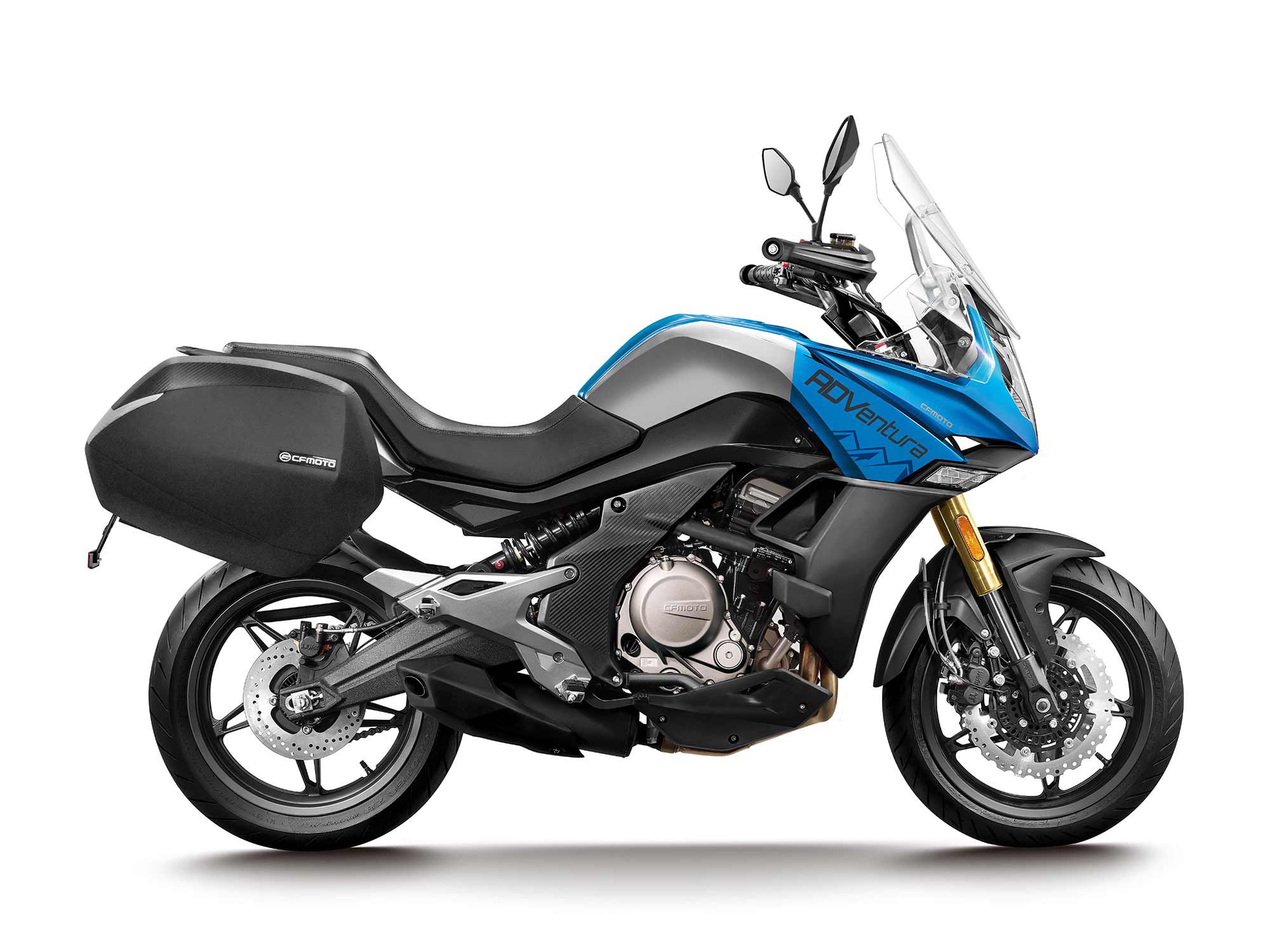
Verdict
The CFMoto 650 Adventura doesn’t quite have what it takes to compete toe-to-toe in the middleweight adventure category. That isn’t to say that the bike isn’t a quality machine with a generous feature set, but it takes more than that to fully capture the adventure bike spirit. Instead, the Adventura feels like a bulkier, less comfortable version of the company’s 650NK naked.
That said, for its modest price, the 650 Adventura is worth considering for entry-level riders looking to break into the touring/adventure scene.
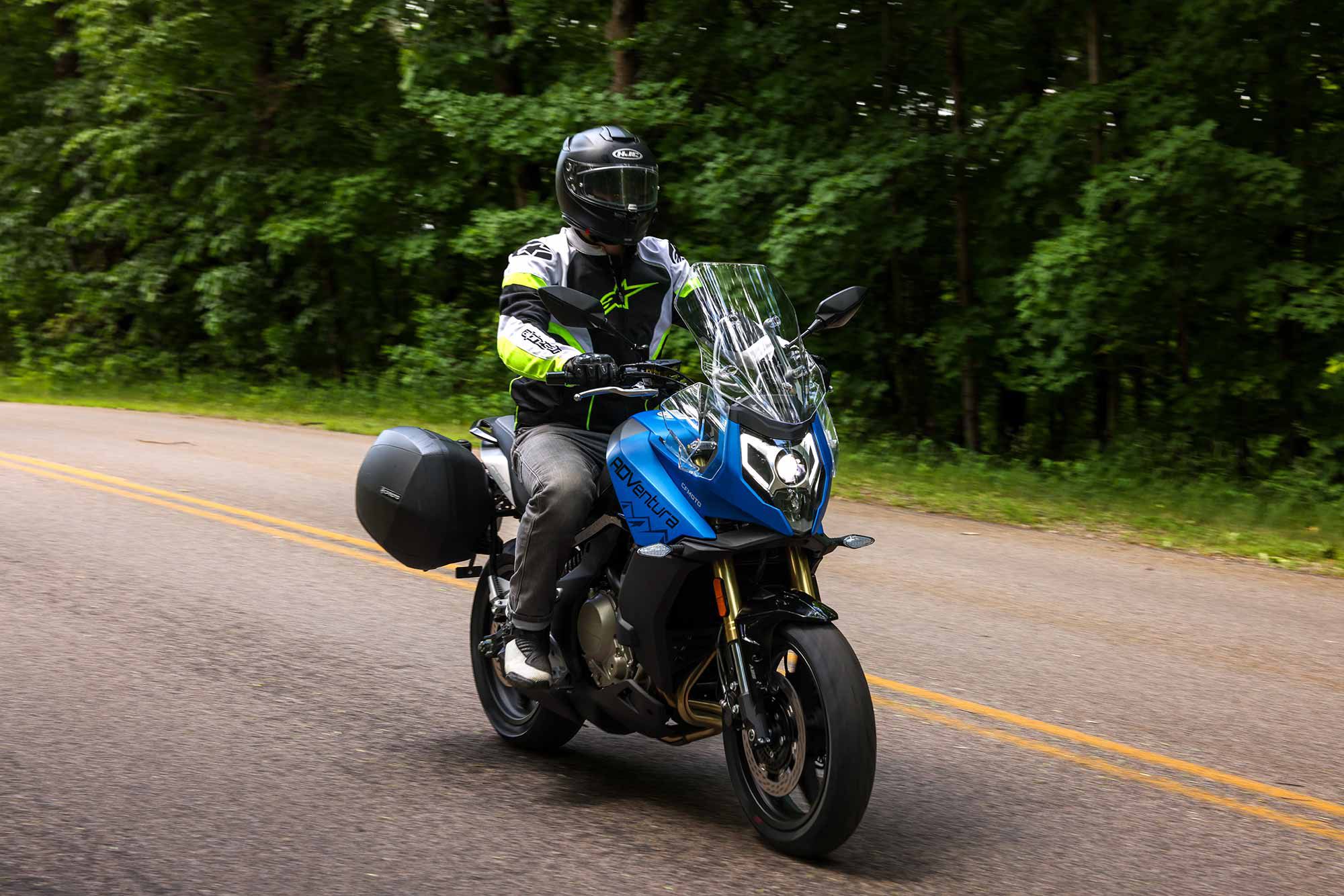
Overview
CFMoto came out full throttle with its 2022 moto lineup, debuting seven new models that fill a long-standing need for premium quality at entry-level price points. The company may be a new name to most consumers, but Chinese-based CFMoto has been a prominent force in the ATV and side-by-side market for years; its US headquarters has been in Plymouth, Minnesota, since 2007. The company’s foray into motos is still relatively fresh, but with close ties to KTM, CFMoto may be well positioned to break into the US market.
The 650 Adventura is the company’s adventure-touring option, a fully featured, well-built 649cc parallel-twin-powered machine. On paper, with its 5-inch full-color TFT display, J.Juan brakes front and rear, fully adjustable upside-down front fork and monotube rear shock, and contemporary styling, the 650 Adventura seems competitive. Riding it in the real world, though, leaves a bit to be desired, with smaller issues like excess heat in the cockpit area. That said, the bike’s low price point will most likely be enough for entry-level riders to overlook any flaws.

Updates for 2022
As this is the first year of production for the 650 Adventura, there are no updates to report.
Pricing and Variants
The 650 Adventura isn’t the only model in CFMoto’s lineup with a 649cc parallel twin, adjustable front and rear suspension, 5-inch TFT display, and J.Juan disc brakes; much of this is shared with CFMoto’s 650NK. The Adventura seems to be, more or less, a restyled version of the NK with a taller seat and a heftier price tag.
The only variations on the Adventura are trim color; it’s available in either Athens Blue/Matte Titanium Gray or Nebula White/Matte Titanium Gray.
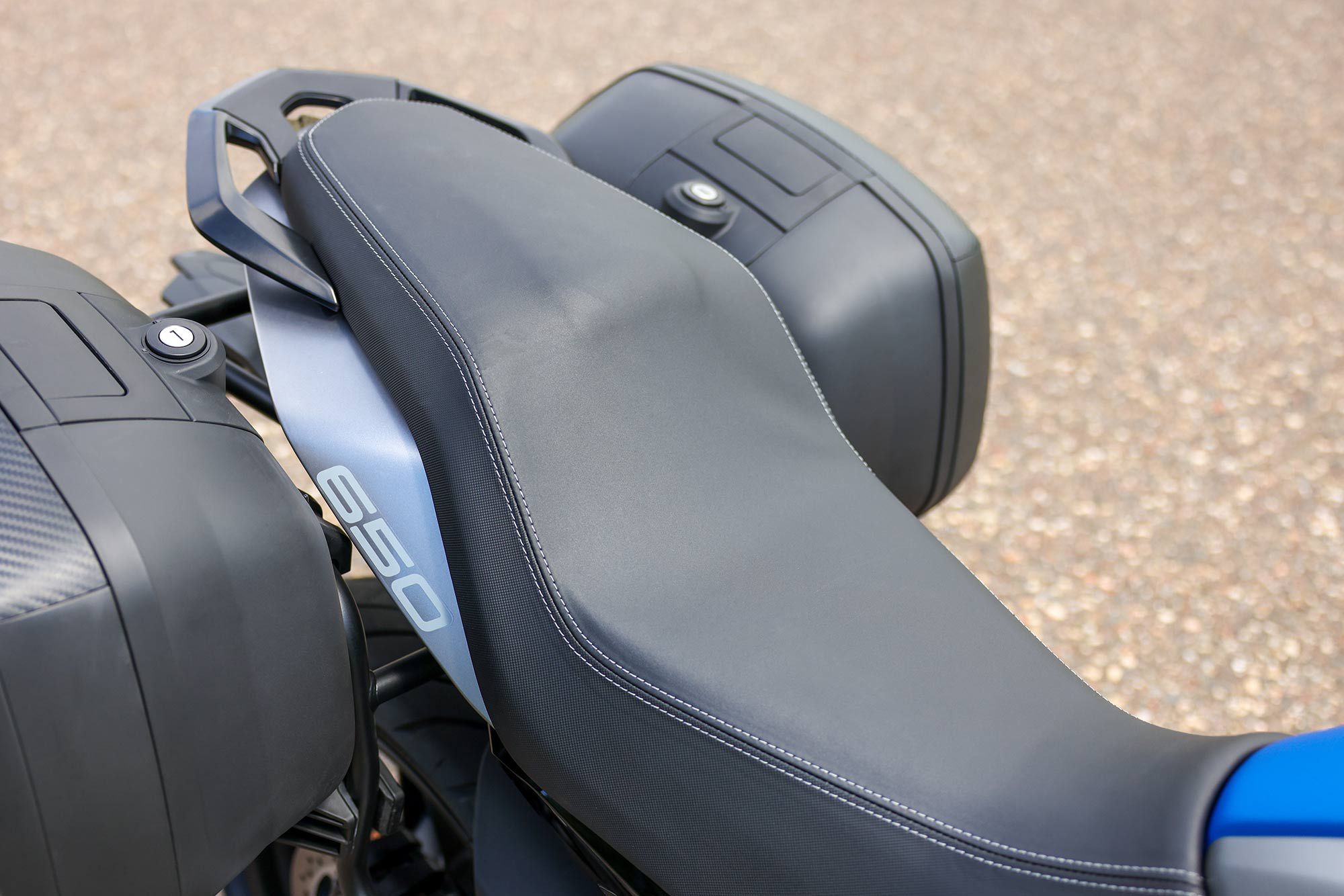
Competition
CFMoto’s 650 Adventura is intended to compete in the middleweight adventure class, where it goes up against bikes such as the Aprilia Tuareg 660 and Suzuki V-Strom 650 (soon to be replaced by the V-Strom 800DE). Other standouts in this category include the Yamaha Ténéré 700, KTM 890 Adventure R, BMW F 850 GS Adventure and 850 GS, Husqvarna Norden 901, Triumph Tiger 900 models, and the Ducati DesertX.
While the Adventura may be less capable in off-road riding, its modest price tag may justify a reduction in versatility, especially if on-road touring will be the bike’s primary use.

Powertrain: Engine, Transmission, and Performance
The 650 Adventura’s 649cc parallel-twin engine produces a moderate 60 hp and 41.3 lb.-ft. of torque, providing riders with adequate pep for around-town riding and touring. While a bit lacking in the midrange, the engine’s Bosch EFI system makes for a smooth, predictable powerband.
Power goes through a six-speed transmission, with a CF/SC slipper clutch for quick and accurate shifts. In testing, the bike performed decently, but compared to its naked counterpart the Adventura feels notably less refined on the street.
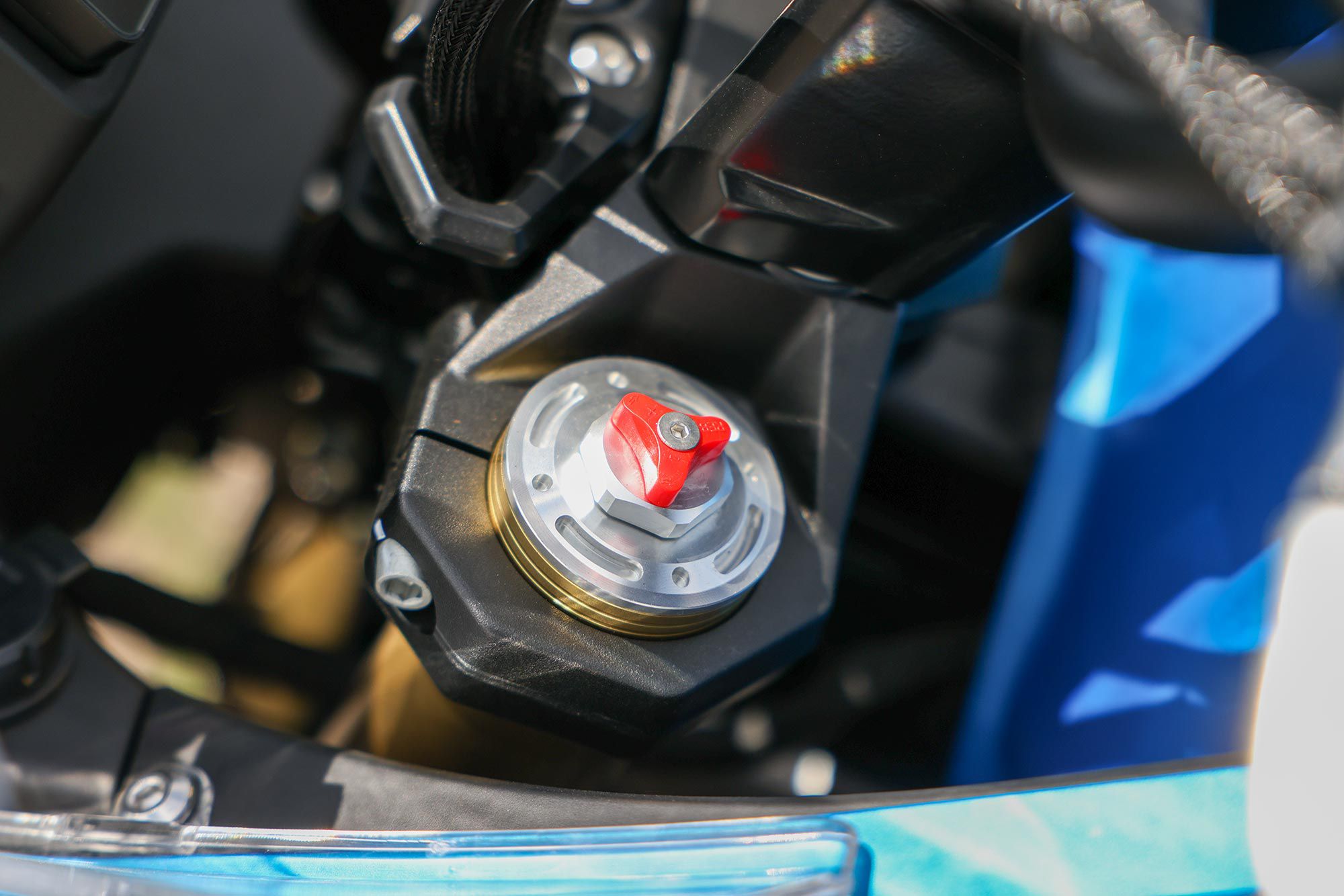
Handling
The 650 Adventura is fitted with premium upside-down adjustable dampers front and rear, including rebound-adjustable front fork and rebound/preload-adjustable rear offset monotube shock. The dampers perform well out of the box for riders weighing around 180 pounds; however, larger riders may need to increase damping to get the most out of the bike.
Handling is approximately what you’d expect from any middleweight adventure bike with a 33-inch seat height. Steering is moderately light and overall good for spirited riding, though not as sporty as the shorter-wheelbased and lower-seated CFMoto 650NK.

Brakes
As on the 650NK, the Adventura’s J.Juan front brakes are one of the bike’s better aspects, providing excellent braking feel and fade-free performance. Up front, CFMoto uses dual 300mm rotors and two-piston calipers, while a single-piston caliper acts on the bikes’ single rear 240mm rotor.
The model also features standard dual-channel Continental ABS, which performed well in both wet and dry conditions during test sessions.
Fuel Economy and Real-World MPG
There is currently no fuel data for the CFMoto 650 Adventura.
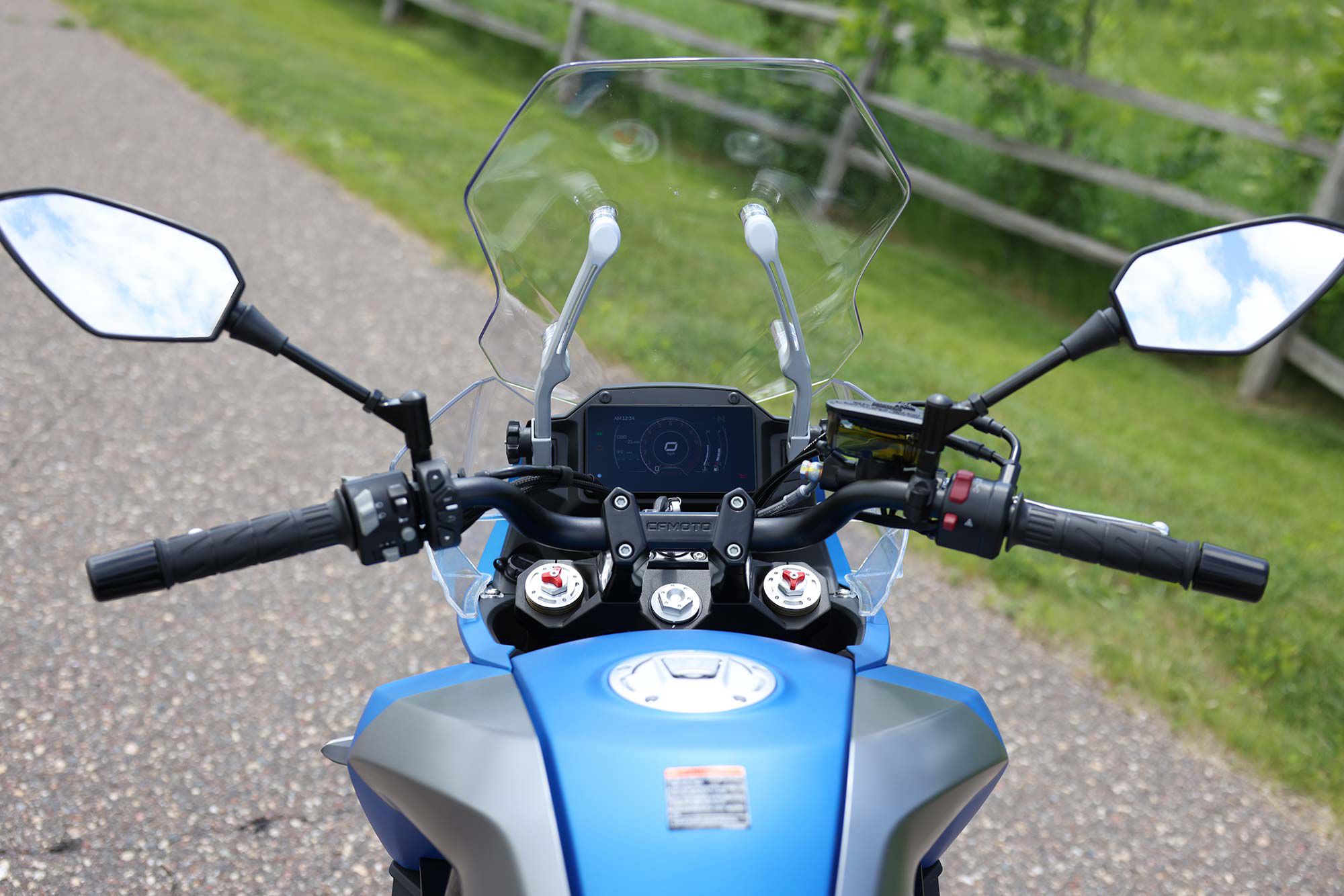
Ergonomics: Comfort and Utility
Overall, the 650 Adventura isn’t a bad first attempt at an adventure bike. It simply isn’t as refined as bikes from competitors with more experience. For instance, the upright seating position isn’t necessarily uncomfortable; it’s adequate for touring and around-town riding. However, the bike’s bodywork seems to funnel engine heat directly upward. When paired with the oversized windscreen, heat ends up trapped directly in front of the rider for an uncomfortably toasty riding experience. Perhaps this is a side effect of basing operations out of Minnesota? In any case, the excess heat will almost certainly get some complaints in warmer climates.
The Adventura includes a set of roomy hard-sided panniers and an oversized seat for long-distance comfort. Other nice features include the aforementioned adjustable windscreen, integrated hand guards, and a USB charging port. A lower fairing/engine guard is sold separately.

Electronics
The 650 Adventura’s electronics include a full-color 5-inch TFT display, dual-channel Continental ABS, and LED lighting. The bike is also equipped with dual riding modes, Eco and Sport, allowing riders to choose between fuel economy and total performance.
Warranty and Maintenance Coverage
CFMoto’s 650 Adventura comes with a two-year factory warranty.
The 650 Adventura’s quality is just as impressive as that of the rest of CFMoto’s lineup. Defined welds can be seen on the carbon-steel trellis frame, fit and finish appears excellent, and the company has opted for tried-and-tested components to deliver a pleasant feel and appearance.
2022 CFMoto 650 Adventura Claimed Specs
| MSRP: | $6,799 |
|---|---|
| Engine: | 649cc, DOHC, liquid-cooled parallel twin; 4 valves/cyl. |
| Bore x Stroke: | 83.0 x 60.0mm |
| Transmission/Final Drive: | 6-speed/chain |
| Fuel System: | Bosch EFI |
| Clutch: | Wet, multiplate slipper |
| Frame: | Tubular steel w/ aluminum alloy swingarm |
| Front Suspension: | Inverted fork, rebound damping adjustable |
| Rear Suspension: | Cantilever, rebound damping and preload adjustable |
| Front Brake: | Radial-mounted 2-piston J.Juan caliper, 300mm disc w/ ABS |
| Rear Brake: | 1-piston floating J.Juan caliper, 240mm disc w/ ABS |
| Wheels, Front/Rear: | Aluminum alloy; 17 x 3.5 in. / 17 x 4.5 in. |
| Tires, Front/Rear: | 120/70R-17 / 160/60R-17 |
| Rake/Trail: | 24.5°/4.1 in. |
| Wheelbase: | 56.0 in. |
| Ground Clearance: | 5.9 in. |
| Seat Height: | 33.0 in. |
| Fuel Capacity: | 4.75 gal. |
| Claimed Wet Weight: | 480 lb. |
| Contact: | cfmotousa.com |
Source: MotorCyclistOnline.com